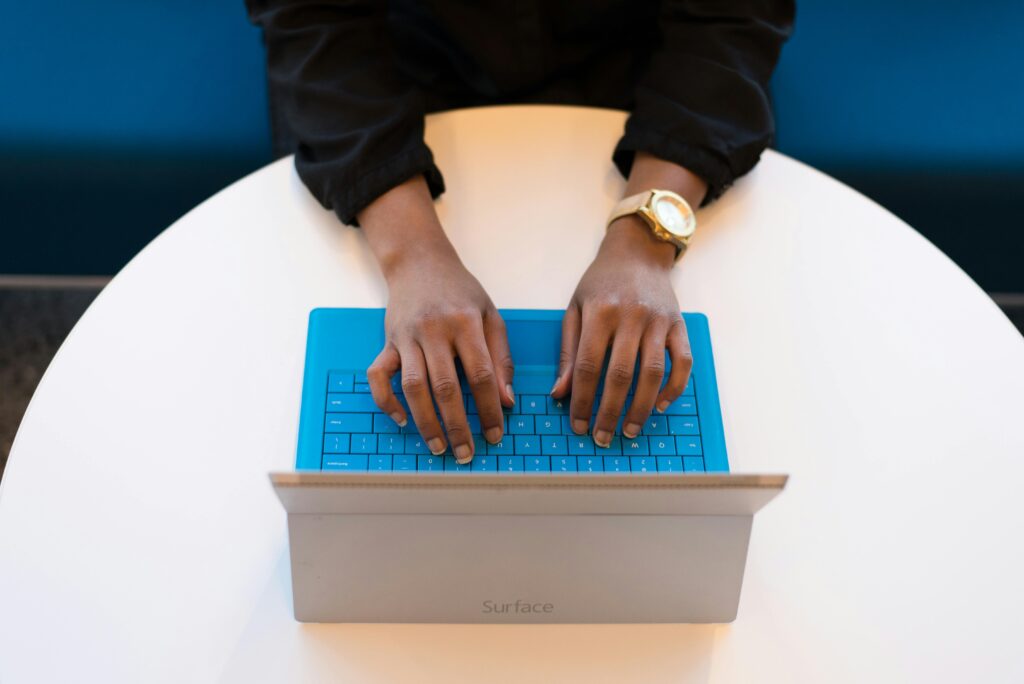
If you’re serious about mastering touch typing, choosing the right keyboard is more important than you might think. Whether you’re a student just starting out or a professional improving your typing efficiency, the keyboard you use can shape your comfort, accuracy, and long-term progress.
A good keyboard isn’t just about looks or price—it’s about function, ergonomics, and how well it supports your digital learning goals. Here’s what to consider when selecting a keyboard that will help you type faster, longer, and with less strain.
Understanding Keyboard Types and Features

The first step in choosing the best keyboard for learning touch typing is understanding the different types available.
1. Membrane vs. Mechanical Keyboards
Membrane keyboards are quiet, affordable, and commonly used in most schools and offices. They’re great for beginners, but the keys may feel “mushy,” which can make it harder to build tactile accuracy. Mechanical keyboards, on the other hand, use physical switches under each key, offering a crisp, responsive feel that improves feedback. Many advanced typists prefer these because they allow for faster, more precise keystrokes.
2. Ergonomic Designs
If you’ll be typing for extended periods, an ergonomic keyboard is worth considering. These are designed to reduce wrist strain and support proper hand alignment. Curved or split-key layouts may feel strange at first, but over time, they encourage better posture and reduce fatigue—an essential part of maintaining proper typing technique.
3. Keyboard Size and Layout
For typing practice, a full-sized keyboard is ideal because it includes all keys—letters, numbers, function keys, and arrows. Compact keyboards can save desk space, but they sometimes squeeze keys together or omit sections, which can disrupt muscle memory development. Sticking to a standard layout ensures consistency and accuracy as you train.
Master Typing & Digital Skills with Typesy!
Go beyond keyboarding—Typesy helps you boost digital literacy, productivity, and efficiency in today’s tech-driven world.
Key Factors That Support Typing Progress

When learning touch typing, comfort and consistency are crucial. A well-chosen keyboard can help you practice longer without discomfort and reinforce correct habits.
1. Key Travel and Resistance
Key travel refers to how far a key moves when pressed. Shallow keys (like laptop keyboards) can feel faster but may tire your fingers over time. Deeper keys with moderate resistance encourage deliberate, accurate strokes—a better match for beginners focused on precision over speed.
2. Backlighting and Visibility
While touch typists aim to avoid looking at the keyboard, beginners still benefit from clear visibility. Backlit keyboards are excellent for low-light environments and help keep your eyes relaxed, especially during late-night study sessions.
3. Build Quality and Durability
Typing practice involves thousands of keystrokes daily, so a durable keyboard pays off. Mechanical models often last longer, but even membrane keyboards can perform well with quality construction. Look for reliable brands that emphasize comfort and long-term performance.
4. Compatibility with Learning Software
If you’re using a typing program like Typesy, make sure your keyboard is compatible with your device—whether that’s a desktop, laptop, or tablet. Some learners even connect external keyboards to tablets for a more authentic typing experience.
Finally, remember that typing mastery isn’t just about hardware—it’s also about consistent, mindful practice. A well-chosen keyboard will make learning smoother, but progress comes from building muscle memory and improving digital fluency over time.
Building a Productive Typing Environment
Beyond the keyboard itself, your setup matters. Keep your monitor at eye level, your chair supportive, and your wrists straight while typing. Small adjustments can make a big difference in how you feel after hours of practice.
Consider pairing your new keyboard with a good wrist rest or adjustable desk setup to reduce strain. These ergonomic improvements will help you maintain consistent posture, which leads to faster progress and fewer typing-related injuries.
Your keyboard should feel like an extension of your hands—comfortable, responsive, and reliable. With the right tool, every typing session becomes more enjoyable and productive. Whether you prefer the soft touch of a membrane keyboard or the satisfying click of mechanical switches, the best keyboard is the one that supports your comfort and helps you stay focused on learning.
Typing may have started as a skill for office workers, but today, it’s essential for every digital learner. Choosing the right keyboard sets the foundation for years of confident communication and efficient digital work.
Not on Typesy Yet? You're Missing Out!
Master typing, boost productivity, and enhance digital literacy with Typesy—the leading platform for adaptive and engaging typing education. Whether you're an individual learner, a homeschool educator, or managing a classroom, Typesy has the perfect solution for you!
Choose Your Ideal Experience:




